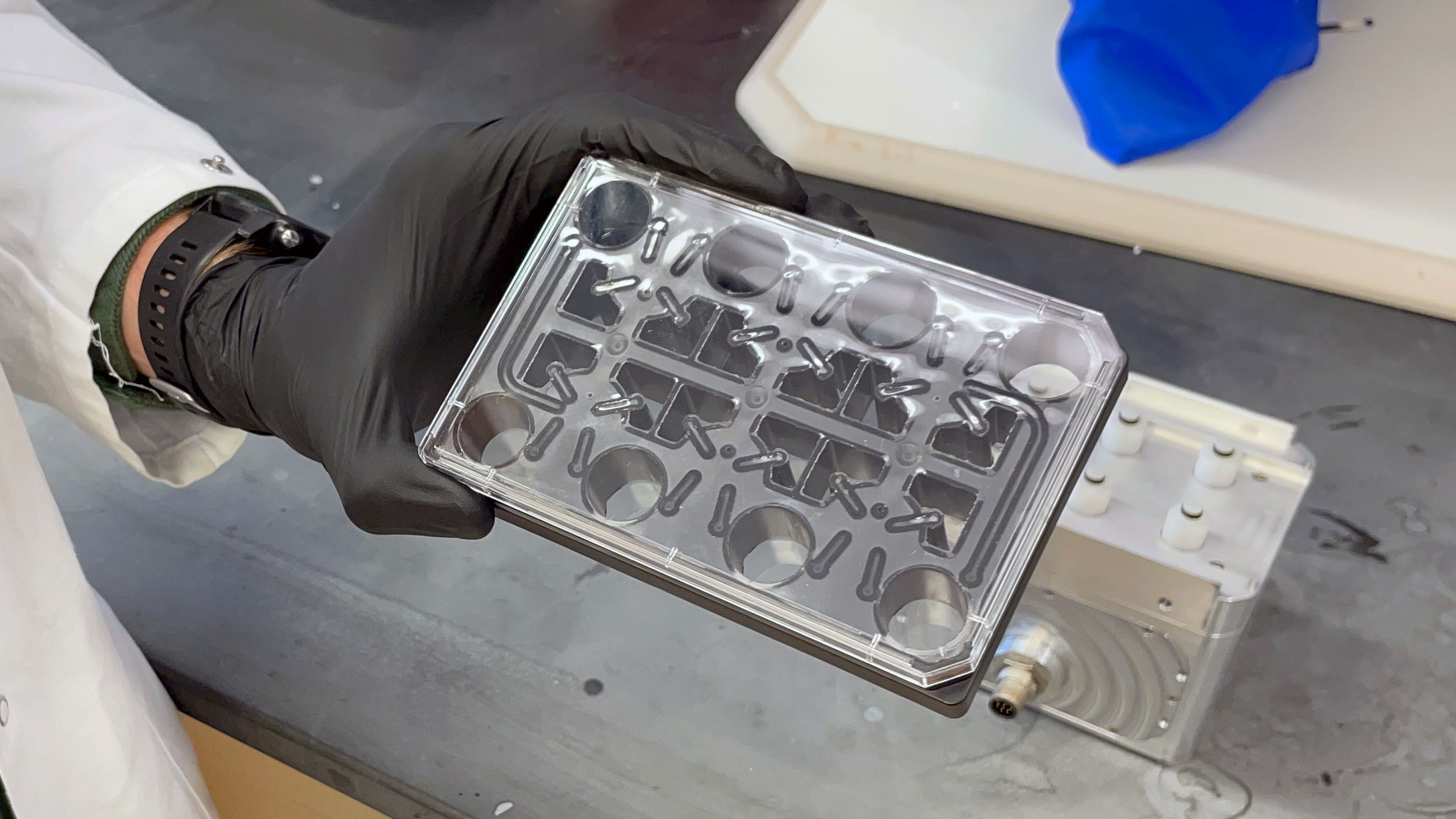Researchers have developed a new microfluidic device that could be used to simulate any human disease in multiple organs and test potential new treatments.
How does it work?
Named Lattice, the device consists of eight wells that can contain cell cultures from different organs, depending on the disease that a scientist might want to study. Via a series of channels and pumps, simulated blood flows through each well; users can control how much of this media flows through, as well as when and where.
This could allow researchers to analyze which organs could be driving a disease and other organs that could be affected downstream, as well as being able to test new drugs – all without ever entering the human body.
Why is it important?
The technology, created by scientists at Northwestern University, represents a significant advancement in how researchers can model the human body, diseases, and the impact of drugs.
“When something’s happening in the body, we don’t know exactly who’s talking to whom,” said lead scientist Julie Kim in a statement. “Currently, scientists use dishes that have one or two cell types, and then do in-depth research and analysis, but Lattice provides a huge advancement. This platform is much better suited to mimic what’s happening in the body, because it can simulate so many organs at once.”
Compared to current in vitro systems (experiments that occur outside of a living organism – in this case, the human body), Lattice can be used to study interactions between up to eight unique organ tissue cultures. This can be done over long periods of time too, giving a better reflection of the time it takes for actual organs to interact.
Until now, mimicking real-time interactions presented something of a challenge to researchers, as standard cell cultures in dishes usually don’t survive very long – which isn’t handy when you’re trying to study a disease that progresses over a long period of time. The channel system in Lattice means that fresh simulated blood can be supplied to the organ cultures in the wells, allowing the samples to survive for much longer timeframes.
What can it be used for?

Lattice has eight wells that can hold tissue cultures from different organs.
Image credit: Northwestern University
The team that developed Lattice has been using the device to study polycystic ovarian syndrome (PCOS), a disease in which the ovaries are impacted by a hormonal imbalance. The exact cause of the disease isn’t known and its impact on organs beyond the ovaries is poorly understood, which is where Lattice could help.
“What we can do with Lattice is start manipulating and controlling which organ is driving the disease,” Kim said. “So, in one experiment, we might start with a PCOS ovary to see how it impacts the liver or muscles. Another experiment might examine if it is the high insulin associated with the disease that’s driving the different organ systems to behave erratically. We can control the tissues and order them in specific ways.”
The researchers also hope that the device could be used as an intermediate stage in trialing new drugs, between testing in animal models of disease and human clinical trials.
“There’s nothing in between animal testing and human clinical trials, and we find that many drugs fail in humans,” Kim said. “Lattice could be that intermediate step between animal studies and clinical trials, because we can test drugs that have passed animal studies to see if they’re safe for human tissues. It’s one more fail-safe check before we put them in bodies.”
Lattice hope that the new technology catches on.
The study is published in the journal Lab on a Chip.
Source Link: Meet Lattice, The "Choose Your Own Adventure" Human Disease Simulator